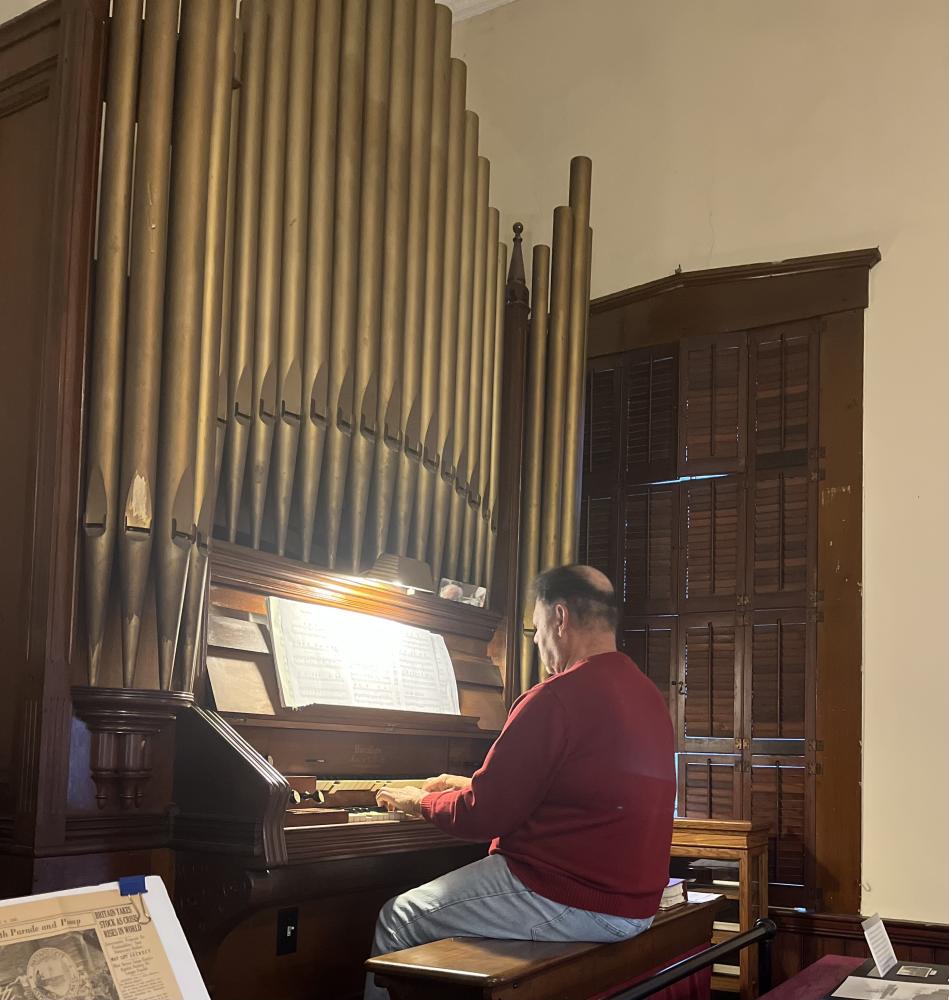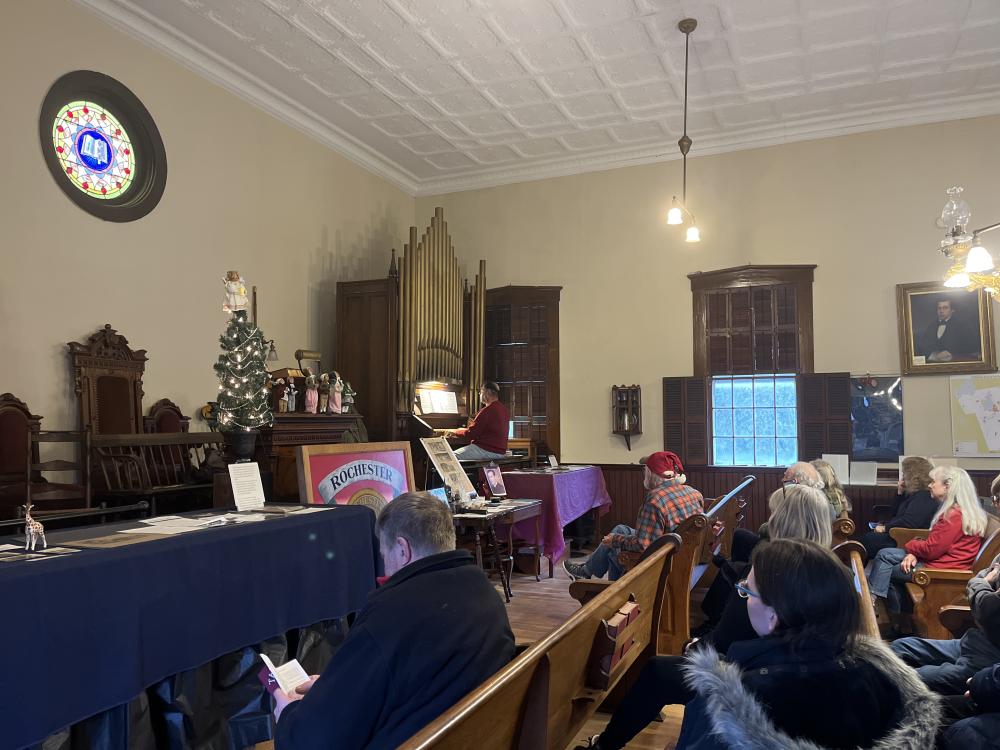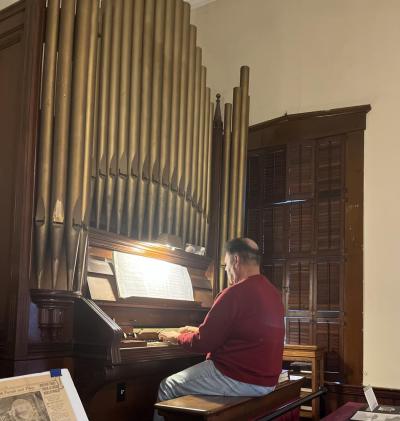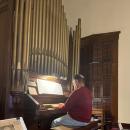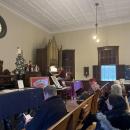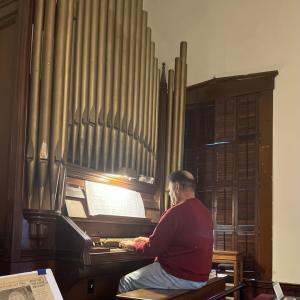Organ player blows Rochester Historical Society away
“I hope there are some Charlie Brown fans out there,” said organ player Bruce Gardzina before playing “Christmas Time is Here” on the rare vocalion reed organ.
Gardzina played classic Christmas tunes for the public to enjoy at the Rochester Historical Society Museum on Sunday, Dec. 11.
New Bedford native Gardzina has been playing the organ since he was 17 years old. His interest for the instrument peaked when he discovered the organ at St. Andrew's church.
“It was a big scary gothic organ,” he said. “It had pipes that were 20 feet tall, it fascinated me,” said Gardzina.
Gardzina has been playing on the historic vocalion reed organ at Rochester Historical Society for approximately three years, although his string of performances stalled due to Covid.
The vocalion reed organ is a rare type of organ that uses air pressure to vibrate reeds— unlike traditional pipe organs that push air through pipes.
“It's like how a flute whistles while a clarinet vibrates a reed,” he said.
“These are just for decoration,” Gardzina explained while gesturing towards the large golden pipes of the organ.
According to Rochester Historical Society President Mack Phinney, the organ Gardzina played was built in 1895 by Mason and Risch piano company. It was donated to the East Rochester Church in 1932 by Mrs. Stone of the Hathaway Estate.
Although the instrument has undergone a few repairs, it is still in need of more.
“Recently the organ blower motor has been replaced and relocated to the furnace room so it no longer takes in outside air,” Phinney said.
Phinney explained that the blower motor for the instrument was once located outside the building and took in air from the outdoors to blow through the instrument. However, the air and contaminants caused damage to the reeds.
Smiles spread across the room as Gardzina played “The Chipmunk Song” despite a few missed notes due to the damaged reeds.
“He did really well and was able to work around it,” said audience member Art Benner.
The Rochester Historical Society Museum plans to hold future events to raise funds in the hopes of restoring the organ.
“We are trying to get the organ seen, heard, and hopefully restored,” Gardzina said.













